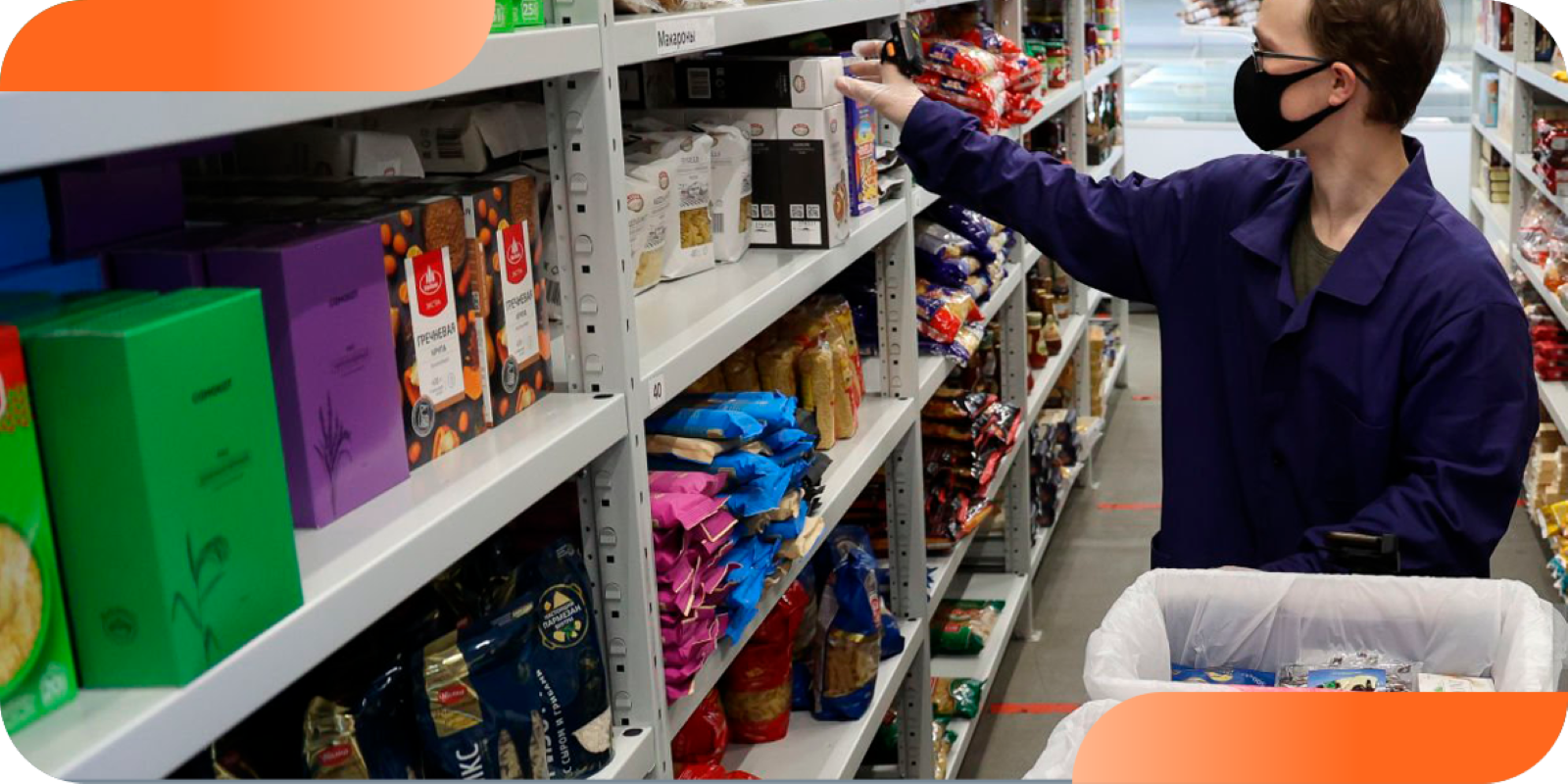Warehouse
What are Supply Chain Service Levels?

Supply chain service levels are a critical indicator that determines the percentage of delivered goods from an order compared to the total order, aiming to meet demand and fulfill customer requirements. In simpler terms, achieving high supply chain service levels demands effort across all processes. For example, a 95% fill rate implies that the company successfully delivered orders on time and, in total, 95% of the time, creating a positive consumer experience.
How to Achieve High Supply Chain Service Levels?
- Design Your Distribution Network in Alignment with Your Delivery Commitment
Determining how many points of sale and warehouses you should have to meet your delivery promise is crucial. More inventory points of sale bring you closer to the customer, reducing transportation costs. However, it also increases inventory levels and associated costs, including operating additional points of sale. The optimal approach involves designing a distribution network using mathematical algorithms to minimize these costs based on customer demand and the desired service level.
- Ensure You Stock the Merchandise Your Customers Will Request
Predicting the products your customers will demand and having them available at the right time and place is one of the most complex challenges in logistics.
You can address these challenges with systems such as Blue Yonder's Demand & Fulfillment or GAINS, among other solutions. These tools simplify and optimize demand planning, inventory, and supply chain service levels. They also allow you to reduce inventory investment and costs using algorithms that manage forecast and planning errors, suppliers, delivery times, products, and more.
Once you have a forecast, it's essential to determine the service level you aim to achieve for each "product" to calculate the safety stock (inventory quantity for protection against demand or supply fluctuations) needed. A "product" you want to have a service level close to 100% will require a high safety stock. It's important to note that achieving 100% accuracy is challenging due to various uncertainties, such as late supplier deliveries or inventory damage.
The graph shows that the higher the supply chain service levels are, the more safety stock is required. This occurs because striving to close more sales necessitates holding more inventory. Additionally, the graph demonstrates that the relationship is not linear; it approaches an asymptotic curve, meaning it will get close (e.g., 99.99%) but never reach 100%.
- Make the Decision for the Nearest and Most Efficient Location to Supply the Complete Customer Order
This can be achieved by regionalizing delivery zones and associating them with a Distribution Center or with an Order Management System (OMS). This helps optimize inventory management, order delivery costs, and commitment to fulfilling customer orders. By doing this, you offer customers a smoother and more efficient experience. Moreover, by integrating with other supply chain solutions, you gain 360° visibility that provides access to variables like:
-
Stock availability
-
Delivery times
-
Logistics costs
Remember that an OMS helps you become more efficient and improve your customer's experience.
To address the above, visibility is crucial. You may promise something you don't have in your distribution center without real-time visibility of available inventory.
- Ensure You Have the Merchandise at Hand When Preparing the Order
Knowing you have the right merchandise readily available in the picking location when the operator needs to prepare the order is essential. The challenge arises when your supply chain isn't digitized, making it challenging to have real-time availability or inventory at your fingertips. This affects your service level by not delivering the "product" due to its unavailability (e.g., inaccessible location).
Good warehouse slotting and appropriate replenishment processes are essential to ensure that merchandise is always available.
- Fill the Requested Product at the Right Time
Prioritizing tasks within the distribution center is crucial, as is the logistic sequence, to get the product out quickly and efficiently, ensuring you fulfill your delivery promise.
The orders that are farthest or the most urgent should be prepared as soon as possible, with less urgent ones having lower priority. This prioritization should align with the transportation strategy. For instance, if you're using a courier service, everything should be ready before the pickup time. On the other hand, if you're using direct or multi-stop transportation, you must prepare the order considering transit times to reach the destination.
In e-commerce, a trend called fast commerce is emerging, offering deliveries within 10 minutes or same-day deliveries. To meet these demands, you need short-order processing and order prioritization.
--> Discover 5 ways to solve last-mile problems in 2024 <--
- Efficiently Package and Prepare the Requested Product
The packaging or the way you deliver orders is essential to optimize transportation costs (e.g., if you deliver on pallets, they should match the truck's height to minimize dead space; if you deliver in cardboard boxes, use the smallest possible box) and ensure that the merchandise arrives correctly. Concerning packaging preparation, there are often issues with logistical footprints since customers don't always have them correctly. Having accurate logistical footprints (assisting with volume and weight) is crucial. Additionally, identifying the product you're going to ship or prepare for each destination is important because sometimes they lack the correct label or get misplaced, causing uncertainty about which truck they should go on or their stage in the process, etc.
- Load the Complete Order onto the Correct Truck or Delivery Vehicle
Loading a complete order onto trucks is critical to optimize time (loading, unloading, and delivering merchandise) and fulfill your delivery promise to successfully satisfy your customers' needs, achieving high service levels. A Transportation Management System (TMS) can help you manage all your shipments and monitor the entire process (including proper truck arrangement, optimized route stops, etc.) from planning (with traceability of which orders are going, their status, and visibility of whether the order is complete or not, etc.) to trip settlement.
With a TMS, you can achieve the following:
-
Up to a 40% improvement in service levels
-
Up to an 8% reduction in transportation costs
-
Up to a 12% increase in utilization capacity
- Keep the Customer Informed of Progress at Each Stage (inventory reservation, order preparation, departure for delivery, and delivery)
Visibility of what's happening in the distribution center is just as important as the customer visibility and order access. Nowadays, customers not only want to see where their order is but they also want online access to it at any time, with messages and alarms for significant events related to the stages of their order's delivery, allowing them to anticipate any changes.
Additionally, customers want visibility into the future, meaning they want to know if the merchandise is available, how much it costs, and when it will be delivered. If you can't provide this, you risk losing sales and customers.
How Can a WMS Help Me?
A Warehouse Management System (WMS) is useful for improving service levels or fill rates and can assist you in the following areas:
-
Deciding for the nearest and most efficient location to supply the complete customer order. Discover the most common errors in picking here.
-
Ensuring you have the merchandise at hand when preparing the order
-
Filling the requested product at the right time
-
Efficiently packaging and preparing the requested product
-
Loading the complete order onto the correct truck or delivery vehicle
-
Informing the customer of progress at each stage (inventory reservation, order preparation, departure for delivery, and delivery).
In conclusion, a WMS can help you achieve the following results, enabling you to achieve high supply chain service levels and satisfy your customers:
-
Close to a 100% service level or fill rate
-
Close to 100% visibility of inventory and customer orders in real-time
-
Up to a 15% increase in productivity
-
Up to a 50% reduction in operating costs.
Follow us on LinkedIn to stay informed!

Francisco Giral
Chief Executive Officer, and Founder of Netlogistik, a company committed to delivering high-value Supply Chain services and cutting-edge technological solutions. With over two decades of experience, he has been actively involved in both internal and external consultancy, focusing on refining processes, leveraging technology, optimizing infrastructure, and enhancing organizational structures within the logistics departments of numerous companies across Mexico and Latin America. His track record boasts significant achievements, including cost reductions, substantial productivity enhancements, and elevated service quality levels.


